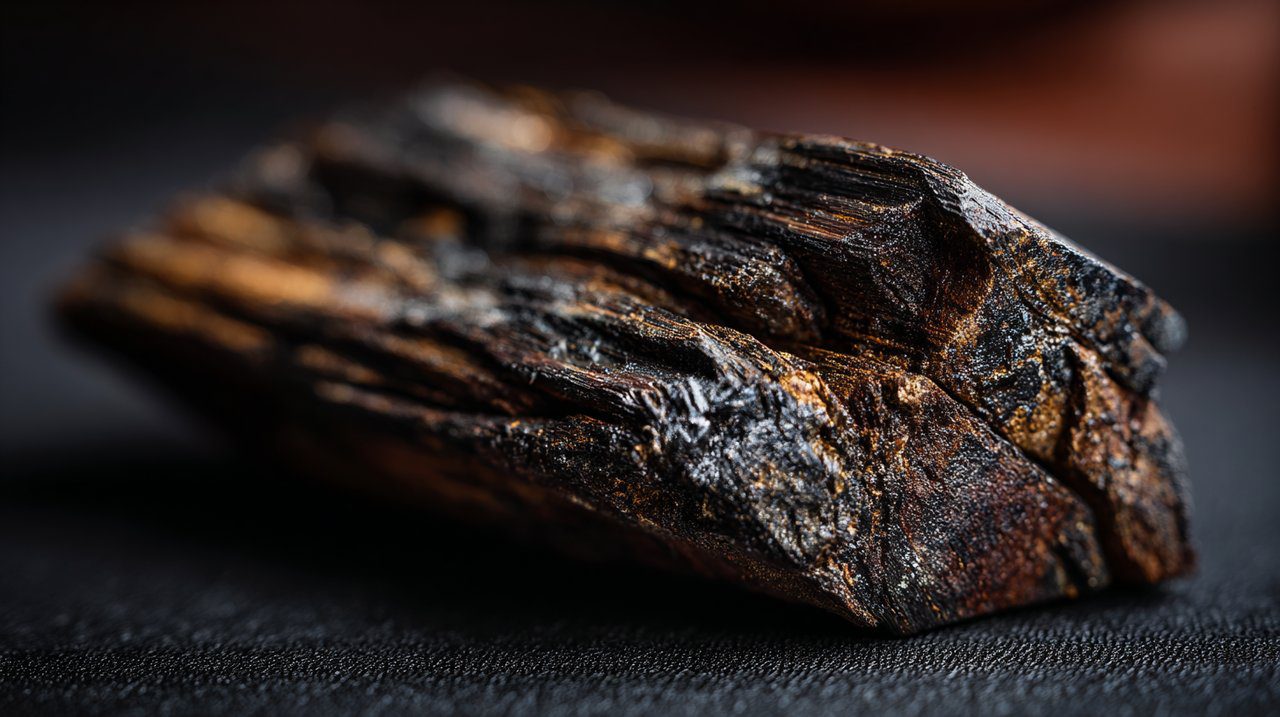Aloes Wood: Properties, Energies, and Spiritual Significance
Imagine a gentle whisper carried on the forest air, a scent more precious than any gem. This is aloes wood, a rare and profound resinous heartwood, born from a tree’s quiet struggle. It stands as a silent testament to nature’s intricate dance of decay and creation, a process that unfolds over decades, sometimes even centuries, far beyond our hurried human rhythm.
In its very being, aloes wood reveals a deep wisdom about resilience. It is not merely a piece of timber, but a natural phenomenon that speaks of a patient interaction between the earth, the tree, and the unseen elements. To truly understand its genesis is to glimpse a profound insight often overlooked in our modern world.
The Essence of Aloes Wood: A Natural Metamorphosis
The Whispers of Its Origin
Aloes wood, known also as agarwood or oud, holds a secret deep within the Aquilaria genus of trees. Its story begins when these trees are wounded or touched by a specific mold. In response, they create a dark, fragrant resin, a natural defense that slowly permeates the heartwood, transforming it into the dense, aromatic material we cherish.
This slow, unpredictable journey makes naturally formed aloes wood exceptionally scarce. Each piece is a quiet marvel, a tangible fragment of time and enduring strength, much like the ancient sandalwood revered for its lasting fragrance and healing properties across many cultures.
Nature’s Resilient Gift
The very formation of aloes wood offers a profound lesson in nature’s transformative power. From the quiet adversity of an injury or infection, a substance of immense value and beauty emerges. This mirrors an enduring Daoist principle: that strength and wisdom can be found within life’s challenges, seeing impermanence not as an end, but as a continuous source of creation.
Like a river finding its path around stones, nature shows us how to flow with life’s currents, transforming obstacles into opportunities for deeper growth.
Each piece of this precious wood carries the essence of its forest home, echoing the whispers of ancient trees and the patient rhythm of the earth. It gently reminds us that growth often springs from unexpected places, a testament to the quiet strength that lies within all living things.
Discovering Aloes Wood: Its Uses and Authenticity
A Symphony of Scent and Tradition
The most celebrated aspect of aloes wood is its unparalleled fragrance. When gently heated, it releases a complex aroma—a symphony of woody, sweet, balsamic, and even subtly animalistic notes. This makes it a cherished component in exquisite perfumery, in the meticulous crafting of incense for meditation, and in revered traditional ceremonies.
Beyond its captivating scent, aloes wood has been a cornerstone in ancient healing traditions. Systems like Ayurveda and Traditional Chinese Medicine have long valued it for properties believed to calm the mind, soothe pain, and support digestive harmony. The essence of aloes wood, therefore, extends beyond mere aroma, touching upon a holistic well-being.
Its rich history in various spiritual practices underscores its role not just as a sensory delight, but as a bridge to deeper cultural and healing wisdom. This deep connection to ancient traditions is a path many seek to understand, much like the path to understanding the enduring legacy of spiritual leaders and their teachings The Human Path: Five Insights into the Buddha’s Enduring Legacy.
The Art of Discerning True Aloes Wood
The profound value of aloes wood, like a rare bloom, attracts both sincere admirers and subtle imitators. The market is unfortunately filled with counterfeit or artificially enhanced pieces. To truly know how to identify real aloes wood, one must cultivate a keen sense of observation, much like a gardener learns to distinguish a true bud from a mimic.
Authentic pieces often reveal an uneven distribution of resin, with darker, richer areas weaving through lighter wood. When touched by flame, genuine aloes wood releases a clean, evolving scent—a complex narrative of the forest, utterly devoid of the harsh chemical notes found in fakes. A simple test, submerging a small piece in water, can offer a clue: high-resin wood often sinks, while lighter pieces may float.
Yet, true identification often transcends these physical markers. It calls for an experienced discernment, a quiet sensitivity to the wood’s inherent energy and aroma. It’s a subtle understanding, akin to listening to the wind—it requires presence and intuition, rather than just sight.

Aloes Wood in Spiritual Practice: A Path to Inner Stillness
Cultivating Stillness Through Aroma
Across many traditions, the scent of aloes wood is believed to carry a unique vibrational quality. It gently invites deeper states of contemplation and meditation. Its grounding aroma acts as a quiet guide, helping to still the restless mind and draw focus inward. It is thought to purify the energetic space, crafting an environment conducive to profound spiritual work.
For those who seek to deepen their practice, incorporating aloes wood can serve as a subtle anchor. It gently guides awareness back to the present moment and the rhythm of the breath. This gentle guidance aligns with the Daoist path of effortless action, where external aids support internal harmony rather than imposing it.
It is in this space of gentle support that one can truly explore the nuances of inner peace, discovering how ancient wisdom can inform modern meditation techniques.
An Invitation to Inner Harmony
Beyond its role in focused meditation, aloes wood is revered as a conduit for accessing inner wisdom and fostering a tranquil mind. Its earthy, calming fragrance evokes a sense of ancient stillness, a gentle reminder of our intrinsic connection to the natural world and the universal flow of energy. It does not demand calm, but rather invites it, much like a quiet forest path beckons one toward introspection.
When we engage with aloes wood, we are not merely experiencing a scent; we are participating in a timeless ritual. This ritual honors balance, presence, and the subtle energies that weave through all existence, helping us to cultivate a deeper sense of self and purpose.
This profound connection to inner wisdom is a journey many embark upon, often finding guidance in symbolic tools and practices that have stood the test of time, such as the mala beads used for mantra recitation and mindful counting Mala Bracelet Meaning: A Guide to Ancient Wisdom and Daily Practice.
As we quietly reflect on the journey of aloes wood—from its arduous birth deep within the earth to its profound influence on the human spirit—we are reminded of nature’s most subtle yet powerful lessons. This precious wood, a living testament to resilience and transformation, offers itself as a gentle guide.
It invites us onto a path toward inner harmony and a deeper, more mindful connection with the natural world. In honoring its essence, we also honor the delicate balance of our planet, encouraging the exploration of sustainable sourcing and ethical practices to ensure its quiet wisdom continues to enrich generations to come. The delicate dance of its aroma, a true natural fragrance, lingers as a reminder of beauty born from endurance.
💡 Frequently Asked Questions
Aloes wood, also known as agarwood or oud, is a dense, aromatic resinous heartwood from certain Aquilaria trees. It forms when these trees are wounded or infected by a specific type of mold, causing them to produce a dark, fragrant resin as a defense mechanism, which then permeates the wood.
Aloes wood is highly rare and valuable because its formation process is slow and unpredictable, unfolding over decades or even centuries. This makes naturally formed pieces exceptionally scarce, with high-quality varieties commanding prices exceeding that of gold.
The primary uses of aloes wood include its unparalleled fragrance for perfumery, incense crafting, and traditional ceremonies. It has also been utilized in traditional medicine systems and is highly valued in spiritual practices and meditation for its ability to aid contemplation and promote a tranquil mind.
Authentic aloes wood typically exhibits uneven resin distribution, with darker, resin-rich areas contrasting with lighter wood. When burned, genuine aloes wood produces a clean, complex scent that evolves over time. High-resin pieces also tend to sink in water.








